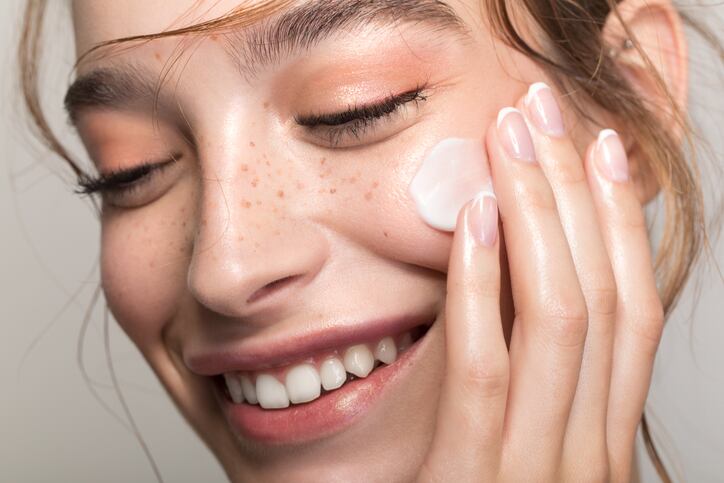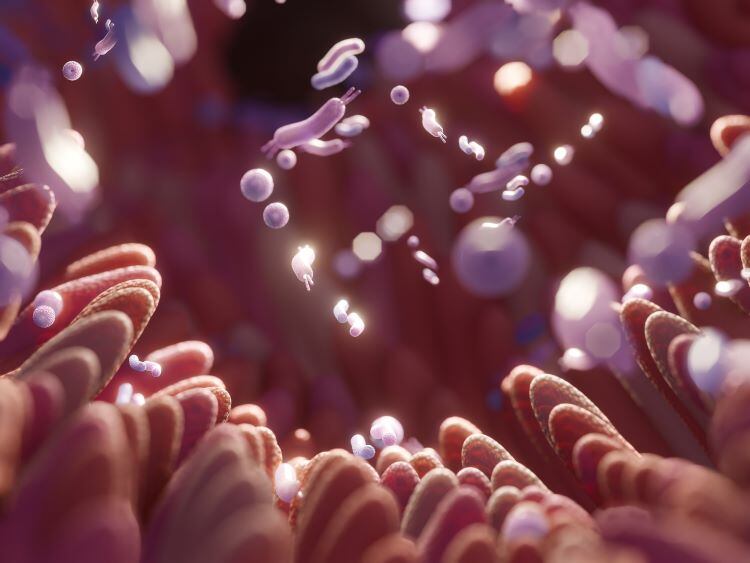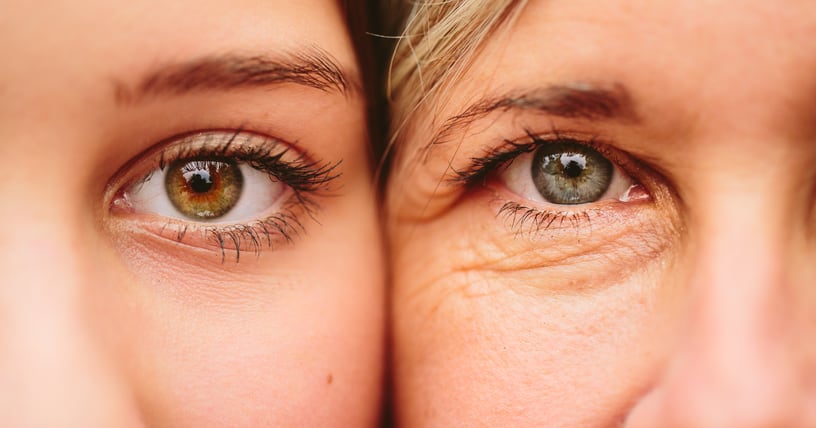Our bodies are home to more than 100 trillion microbes including bacteria, fungi and viruses that live in communities called microbiomes all over our bodies. And these symbiotic microbes have evolved alongside us and are essential to our health and wellbeing, influencing everything from stimulating the immune system, to breaking down potentially toxic food compounds in our guts and synthesising certain vitamins and amino acids.
“The microbes are part of us in a very intimate way, they have evolved alongside us,” Dr Jason Harcup, Unilever’s Beauty & Wellbeing R&D head of skin care and prestige, explained at a recent roundtable event in London.
The ‘big player’ is the gut microbiome, Dr Harcup said. Here, microbiota help to break down hard to digest complex carbohydrates like starches and fibres and the fermentation of indigestible fibres causes the production of short chain fatty acids. The microbes in the gut metabolise things that otherwise couldn’t get through the leaky membrane into our blood and this provides a ‘superhighway’ between the gut and other areas of the body, including the brain and skin.
“Everything is interconnected,” added Dr Samantha Samaras, head of science and technology for Unilever's Beauty & Wellbeing and Personal Care R&D.
According to the science and technology expert, ‘the world has exploded in microbiome science’ over the past decade. Unilever itself has more than 100 patents and peer-reviewed publications in this space and now, thanks to developments in artificial intelligence and computational modelling, Samaras suggested we are at a ‘tipping point’ in our understanding and the ability to leverage the science in product development.
“It will be an aggregating tipping phase that we are going to go through now,” agreed Dr Harcup.
So, where exactly are the biggest opportunities in advancing skin microbiome science and NPD?
Prebiotics and age-related skin concerns
The ‘next evolution’ of microbiome science in skin care is the development of prebiotics that support microbiome health, Michael Hoptroff, Unilever Senior R&D Manager, told CosmeticsDesign-Europe.
The aim is to ‘feed’ the good bacteria, supporting the health of the skin microbiome by helping them flourish and consequently increasing the amount of good-for-us by-products produced when they metabolise their food source.
“In the future we could move to different types of prebiotics to feed different microbes and, over time, we could move to postbiotics and probiotics,” Hoptroff predicted. “It is a fast-moving sector.”
For the time being, however, cosmetic products that deliver probiotics – or live ‘good’ bacteria – face a number of development hurdles. The sheer number of them and the fact that each one performs a different function in a different context, mean that mapping is essential but still some way from realisation. Beyond that, innovators need to overcome challenges around the delivery system and ensuring that the right number of the right bacteria remain live in a product throughout its shelf-life.
Meanwhile, the Unilever research team said question marks remain around efficacy of postbiotics – the bioactive compounds produced by the bacteria in the skin microbiome digesting and breaking down nutrients – in cosmetics. Incorporating these bioactives into formulations wasn’t necessarily the most efficient way of delivering them unless they were absorbed, and our joint evolution with the microbes that live on us mean we already ‘outsource’ this work to the microbiome.
‘Pound for pound’, Dr Harcup said he expects prebiotics to deliver the biggest impact in the sector.
Life-stage specific interventions are another area of potential future innovation, but one that for the time being remains firmly on the horizon. Our microbiomes change throughout our lifecycle, making it possible to tell a person's age or whether they have been through menopause based on analysis of their skin microbiome, the Unilever research team explained. Understanding this evolution could underpin the development of a new generation of products that target the needs of a particular development stage, opening the door to new treatments for age-related issues like acne.
From 'do no harm' to 'nurture' microbiome strategies
Today, Unilever innovators are pondering the question ‘how do we nurture and help the microbiome remain healthy and what can we do when it goes wrong’, Samaras explained.
This effort is built on the foundation of two decades of research. Unilever started working on the skin microbiome back in 2003 and its first products to utilize microbiome skin science were launched in 2017-18. The initial iteration focused on ‘microbiome gentle’ messaging and a ‘do no harm’ approach. Products like Zendium toothpaste and Dove body wash aimed preserve good microorganisms through the use of mild surfactants and actives that don’t disturb resident microbes, maintaining the skin’s ability to support a healthy microbiome.
“The journey we’ve been on in terms of product development was, first, let’s understand the microbiome. Then we started work in the microbiome gentle space with products to do no harm in 2017-18,” Hoptroff reflected.
The R&D investment Unilever is putting behind skin microbiome science is significant. But that doesn’t mean the learnings will only be leveraged in premium beauty products that command a high price point.
While there is certainly an opportunity for the group’s Prestige beauty brands, Hoptroff said there are also possibilities in the mass market. “It is Vaseline. It is Dove. We will do this in Prestige products, but we also see space in mass. It is about making these innovations accessible. It isn’t just hyper premium; it is also about bringing great science into mass brands.”
The science behind 'multiple skin functions' of microbes
The Unilever research team said continued research would also prove critical in advancing product development and the wider category, enhancing opportunities to deliver benefits across ‘multiple skin functions’.
This is because the unique microbial communities that inhabit different areas of our skin act as 'biofactories for cosmetic ingredients’ that influence various issues from dandruff and dry skin to body odour and acne.
“The microbes’ food supply are the natural secretions of skin such as sweat, which they metabolise and provide secretions that are then reabsorbed [through our skin],” explained Dr Harcup.
For instance, in a study published in the journal Nature Experimental Dermatology, Unilever researchers showed one of the most common ‘good’ bacteria on our skins – Staphylococcus epidermidis – feeds on glycerol and excretes helpful by-products such as short chain fatty acids and organic fatty acids, notably lactic acid.
What does this do for our skin health? Quite a lot actually. Lactic acid inhibits the growth of harmful pathogenic bacteria, without any negative effect on the population of ‘good’ bacteria inhabiting our skin. It also helps maintain the pH of the skin and, according to Unilever’s research, supports moisturisation and exfoliation, delivering anti-ageing benefits. Through lab tests, Unilever has also demonstrated that the metabolization of glycerol by skin bacteria on human forearms produces lactic acid that boosts biomarkers associated with skin barrier function.
Glycerol is a well-established ingredient common in cosmetic formulations. But while recent evidence demonstrates the role of glycerol as a nutrient source for bacteria in the skin microbiome, work to examine the by-products of glycerol metabolism is limited. “Our study unravels the production of lactic acid on skin [and] confirms that leveraging the skin microbiome is an attractive route to maintaining healthy skin, and potentially tackling several skin conditions,” Unilever researchers explained.
Take a look back at some of our coverage on Unilever's raft of patents relating to the skin microbiome below:
Unilever files patent on prebiotic scalp care formula targeting dandruff
Thyme and pine: Unilever files patent on microbiota balancing formula with natural actives
'Microbiome balancing': Unilever files patent on topical prebiotic formula




